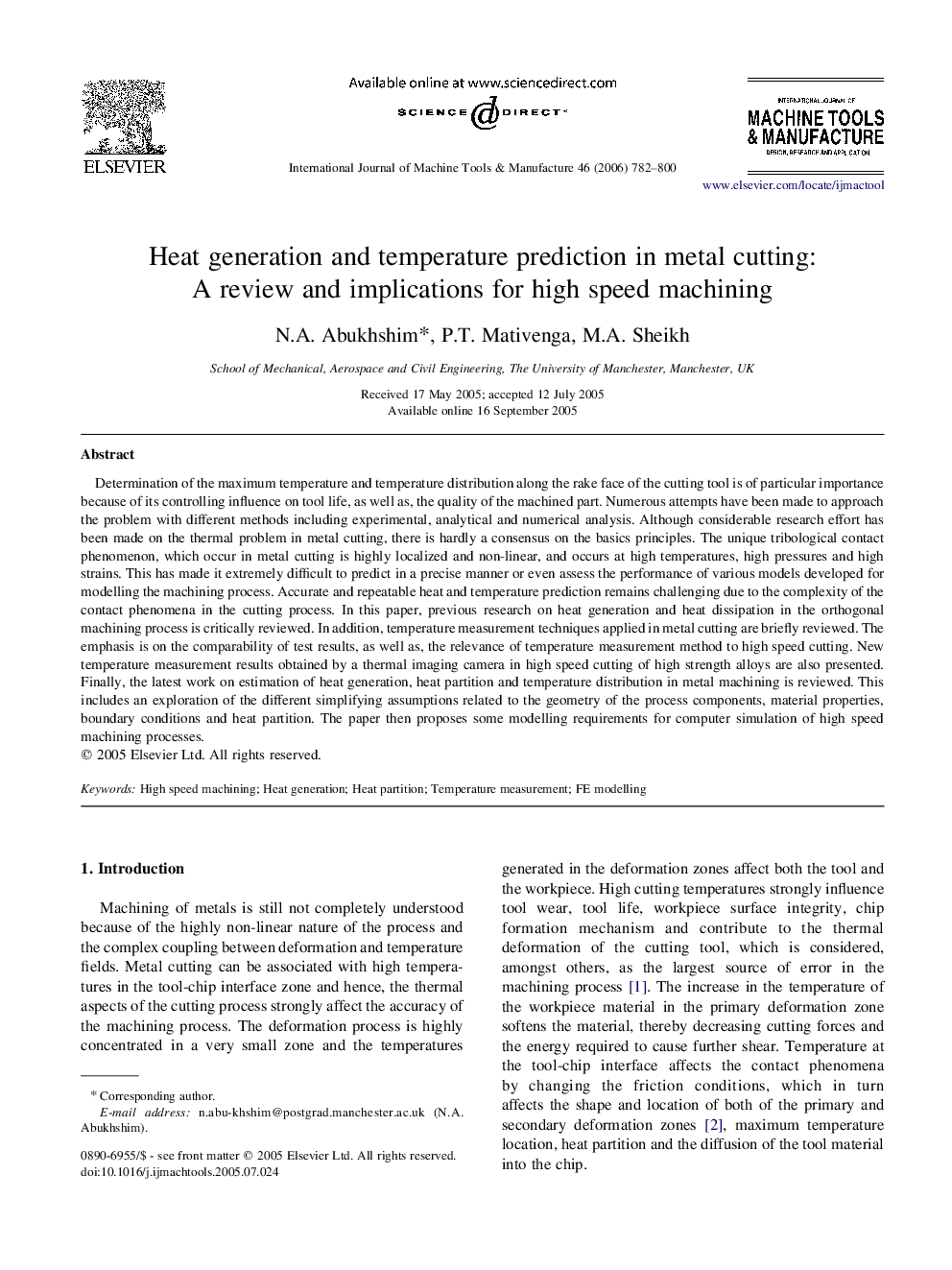| کد مقاله | کد نشریه | سال انتشار | مقاله انگلیسی | نسخه تمام متن |
|---|---|---|---|---|
| 781335 | 1464603 | 2006 | 19 صفحه PDF | دانلود رایگان |

Determination of the maximum temperature and temperature distribution along the rake face of the cutting tool is of particular importance because of its controlling influence on tool life, as well as, the quality of the machined part. Numerous attempts have been made to approach the problem with different methods including experimental, analytical and numerical analysis. Although considerable research effort has been made on the thermal problem in metal cutting, there is hardly a consensus on the basics principles. The unique tribological contact phenomenon, which occur in metal cutting is highly localized and non-linear, and occurs at high temperatures, high pressures and high strains. This has made it extremely difficult to predict in a precise manner or even assess the performance of various models developed for modelling the machining process. Accurate and repeatable heat and temperature prediction remains challenging due to the complexity of the contact phenomena in the cutting process. In this paper, previous research on heat generation and heat dissipation in the orthogonal machining process is critically reviewed. In addition, temperature measurement techniques applied in metal cutting are briefly reviewed. The emphasis is on the comparability of test results, as well as, the relevance of temperature measurement method to high speed cutting. New temperature measurement results obtained by a thermal imaging camera in high speed cutting of high strength alloys are also presented. Finally, the latest work on estimation of heat generation, heat partition and temperature distribution in metal machining is reviewed. This includes an exploration of the different simplifying assumptions related to the geometry of the process components, material properties, boundary conditions and heat partition. The paper then proposes some modelling requirements for computer simulation of high speed machining processes.
Journal: International Journal of Machine Tools and Manufacture - Volume 46, Issues 7–8, June 2006, Pages 782–800